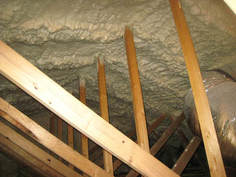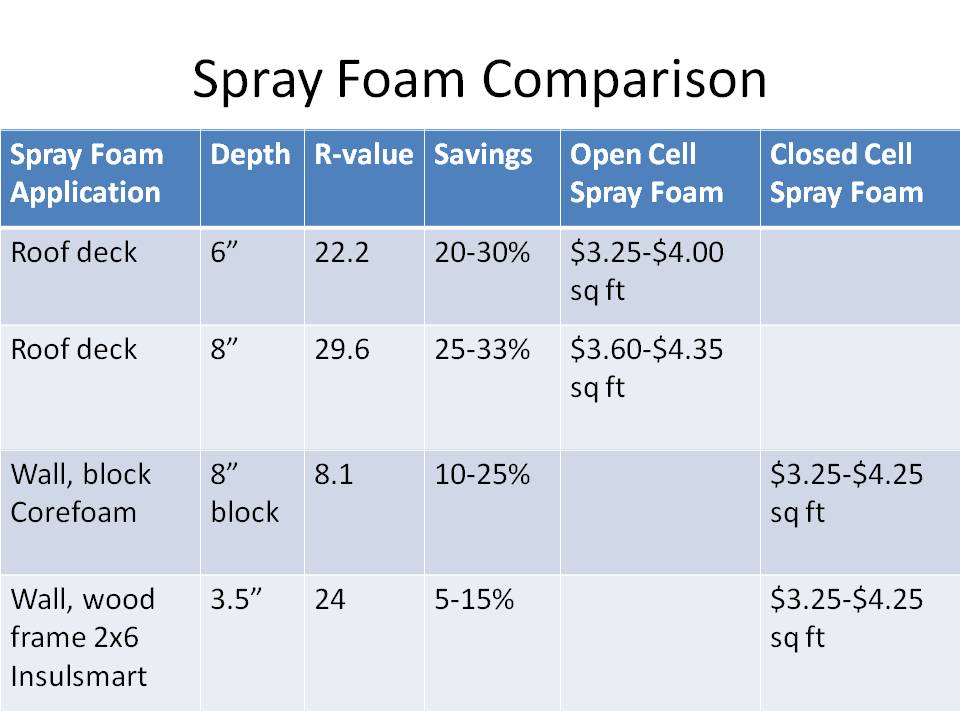
In Arizona existing homes, applying open cell spray foam to the roof deck or attic rafters is typically done to a depth of 6” to achieve an R-value of R-22. While this R-value may be less than Energy Star Standards for loose fill insulation along the attic floor, it is much more effective because of where it is applied. Insulation along the attic rafters is more effective than along the attic floor because it starts slowing the heat gain in the attic before it enters the attic space. Insulation along the attic floor starts working once the heat is already in the attic space, driving up the attic temperature by 30-40 degrees. When insulating along the roof deck, the entire attic becomes conditioned space so it is kept cool, typically no more than 10 degrees warmer than the inside of the house. A conditioned attic also has relatively low dust, making it a great place to lay plywood on the attic floor and use as extra storage area.
Open cell spray foam expands 100 times its original size and fills the cracks and crevices stopping air leaks and has an R-value of 3.7 per inch. Open cell spray foam is not recommended in cold climates but is perfect for hot, dry climates like southern Arizona where we do not have to worry about humidity. In Arizona homes, open cell spray foam is ideal for single story homes with greater attic square footage than two story attics. We like to remove the existing insulation from the attic floor before the spray foam is installed because it prevents the build-up and trapping of heat with the existing insulation left in place. 6” of open cell spray foam is typically applied to the attic rafters to achieve a R-value of R-22.2. Open cell spray foam can be applied thicker to a total depth of 8” to get an R-value of R-29.6.
Closed Cell Spray Foam Along The Roof Deck
Closed cell spray foam has an R-value of 7.1 per inch and is designed for tight, enclosed areas like crawlspaces and tight attics. In tight spaces we do need some clearance to fit our installers and the spray guns. Closed cell spray foam is not a green material and older closed cell spray foam products were known to off-gas for days after the installation. Icynene manufactures a low emitting closed cell spray foam product. Some homeowners think that closed cell spray foam is necessary in the wall cavities in new construction homes but this is not true. Open cell spray foam in a 2x6 wall frame can achieve an R-22 value and will be at least two times less expensive compared to closed cell spray foam.
Spray Foam Insulation in Block Walls
Spray Foam In Wood Framed Walls
Insulating wood framed homes with spray foam can also be done by Insulsmart injection spray foam. Holes are drilled into the wall cavities either from the outside or inside and spray foam is injected filling in the insulation gaps along the way. Since wood frame homes already have wall insulation present, the benefit of insulating with spray foam is less than insulating a block wall.

 RSS Feed
RSS Feed
